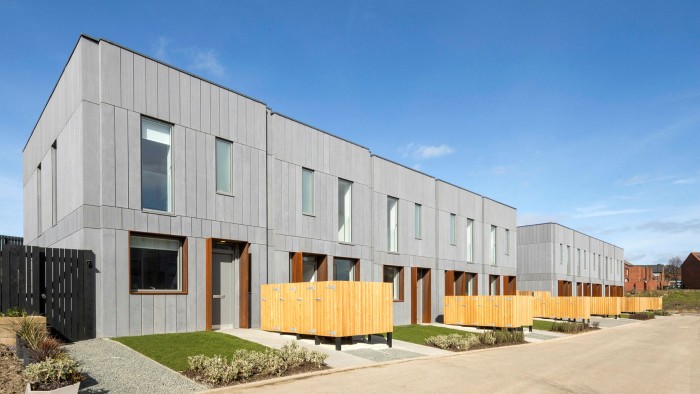
Exploring Modular Home Materials: What Are They?
The world of home construction is continuously evolving, with modular home materials becoming increasingly popular. These materials are not only changing the way homes are built but also offering a myriad of benefits for homeowners and builders alike. In this article, we delve into the intricacies of these materials, exploring their benefits, types, and the impact they have on modern housing.
Modular home materials serve as the foundation of prefabricated buildings, providing versatility, sustainability, and efficiency. With the growing demand for faster construction and eco-friendly solutions, these materials are paving the way for a new standard in home building.

Understanding Modular Home Construction
Before diving into the specifics of materials, it’s essential to understand what a modular home is. Unlike traditional homes, which are built on-site, modular homes are constructed in sections, or modules, in a factory setting. These modules are then transported to the building site and assembled into a complete home.
The Rise of Modular Homes
The popularity of modular homes has surged in recent years due to their affordability, quick construction time, and customizable designs. Companies such as luxury modular homes now offer options that rival the aesthetic and quality of traditional homes.
Benefits of Modular Home Construction
Aside from reduced construction time and cost, modular homes offer superior quality control, as they are built in a controlled environment. This process minimizes construction delays typically caused by weather conditions and ensures consistent quality. Additionally, modular homes are often built with environmentally friendly materials, contributing to a sustainable future.
Types of Modular Home Materials
The effectiveness of modular home construction largely depends on the materials used. Let’s explore some of the primary materials that make these constructions possible.
Steel
Used for its strength and durability, steel is a common choice in modular construction. Its ability to withstand harsh conditions makes it ideal for the structural framework of a home.
Wood
Wood is another popular choice due to its versatility and aesthetic appeal. It’s often used for interior finishes and adds a warm, natural touch to modular homes.
Concrete
Offering excellent insulation and resistance to extreme weather, concrete is another preferred material. It’s often used in modular homes in regions prone to adverse climates.
Sustainability in Modular Home Materials
The push towards green living has significantly influenced the modular home industry. Materials used are increasingly sourced from sustainable means, and the construction process itself is designed to minimize waste and reduce carbon footprint.
Recycled Materials
Many manufacturers use recycled materials, including reclaimed wood and recycled steel, to lessen environmental impact.
Energy-Efficient Solutions
Modular homes often incorporate energy-efficient technologies, such as solar panels and state-of-the-art insulation, to reduce energy consumption.
Customization and Design Flexibility
One significant advantage of modular homes is the ability to customize the design and layout according to personal preference. Companies like modular home design offer a range of floor plans and finishes to choose from, ensuring each home is uniquely tailored to its owner.
Adapting to Different Needs
Whether you’re looking for a compact tiny modular home or a spacious family residence, modular home materials and design can be adapted to meet any demand.
Comparing Traditional and Modular Home Materials
While traditional homes rely on materials sourced and constructed on-site, modular homes benefit from modern production techniques. This process results in materials being used more efficiently and a reduction in construction waste.
Cost Efficiency
Thanks to the streamlined building process and reduced labor costs, modular homes are often more budget-friendly than their traditional counterparts.
Durability
Factory settings ensure that all modular home materials meet stringent quality standards, resulting in a robust and long-lasting construction.
Future Trends in Modular Home Materials
As technology advances, so too will the materials used in modular homes. Emerging trends include smart home integration and the use of 3D-printed materials, which promise to make these homes even more efficient and customizable.
Integration of Smart Technologies
The incorporation of smart devices in modular homes presents new opportunities for energy savings and enhanced security features.
Innovative Materials
As research progresses, innovative materials like aerogels and advanced composites could further revolutionize the industry.
Conclusion
Modular home materials are at the forefront of a shift towards sustainable, efficient, and affordable housing solutions. With an emphasis on quality and customization, they offer a promising alternative to traditional home construction.

FAQs about Modular Home Materials
1. Are modular homes environmentally friendly?
Yes, many modular homes are built with environmentally friendly materials and designed to minimize waste.
2. Can modular homes be customized?
Absolutely! Modular homes offer a high degree of customization in terms of layout and design.
3. How long does it take to build a modular home?
The construction process is generally much faster than traditional homes, often taking just a few months from start to finish.
Learn more about modular home materials and the benefits they offer in transforming the future of housing.
This article contains affiliate links. We may earn a commission at no extra cost to you.